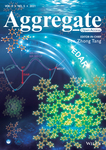Journal list menu
Export Citations
Download PDFs
FRONT COVER
Front Cover: Molecular mechanism of aggregation-induced emission
- First Published: 22 October 2021
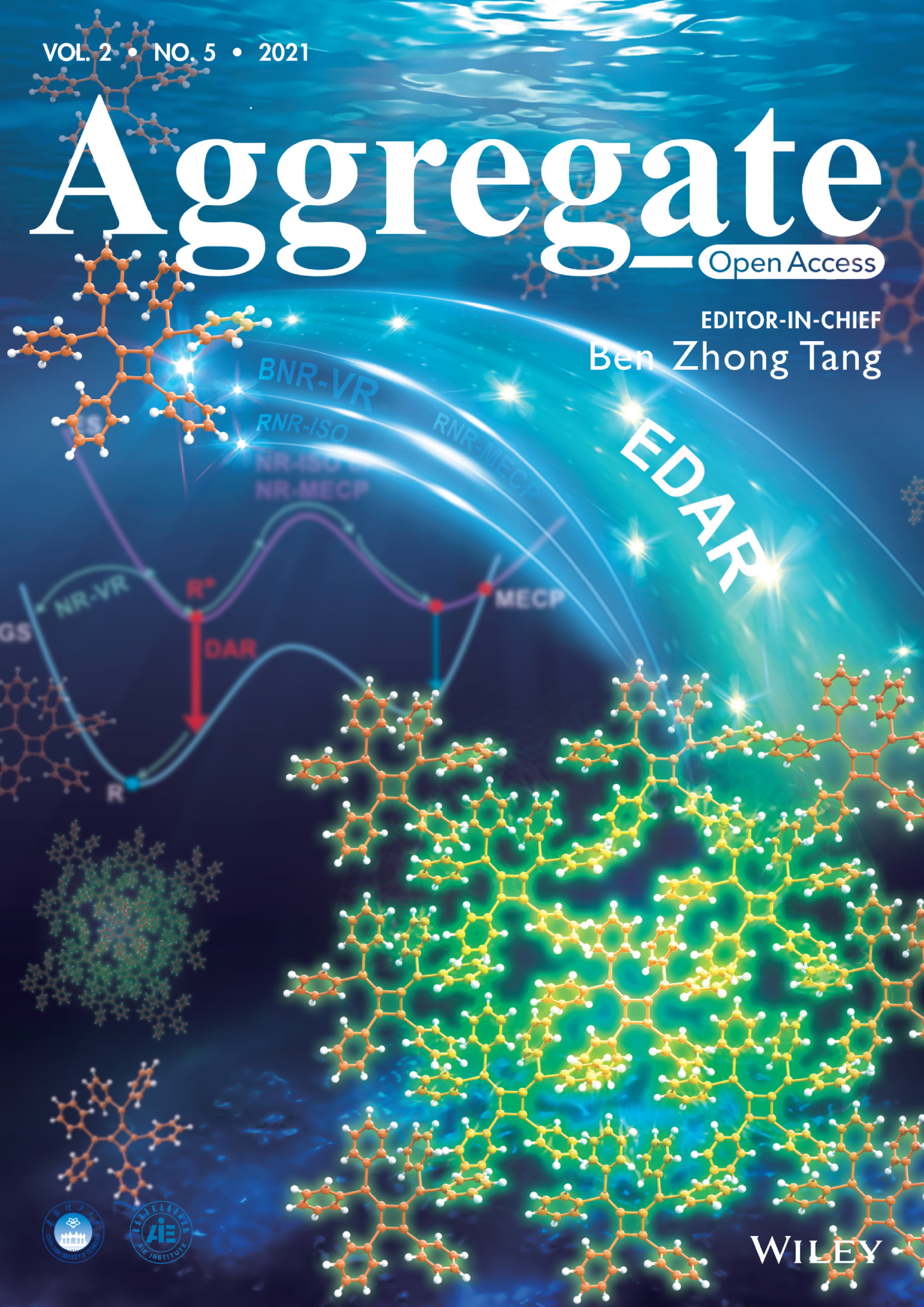
This review provides a comprehensive and profound theoretical picture of the inherent molecular mechanisms of aggregation-induced emission in a variety of AIEgens. It is expounded about the closing of the nonradiative decays pathways and opening of the radiative decay pathway and their dependence on molecular systems. These will be helpful to deeply understanding the universality of AIE phenomenon. (Aggregate. 2021;2:e91)
INSIDE FRONT COVER
Inside Front Cover: Metallacycles, metallacages, and their aggregate/optical behavior
- First Published: 22 October 2021
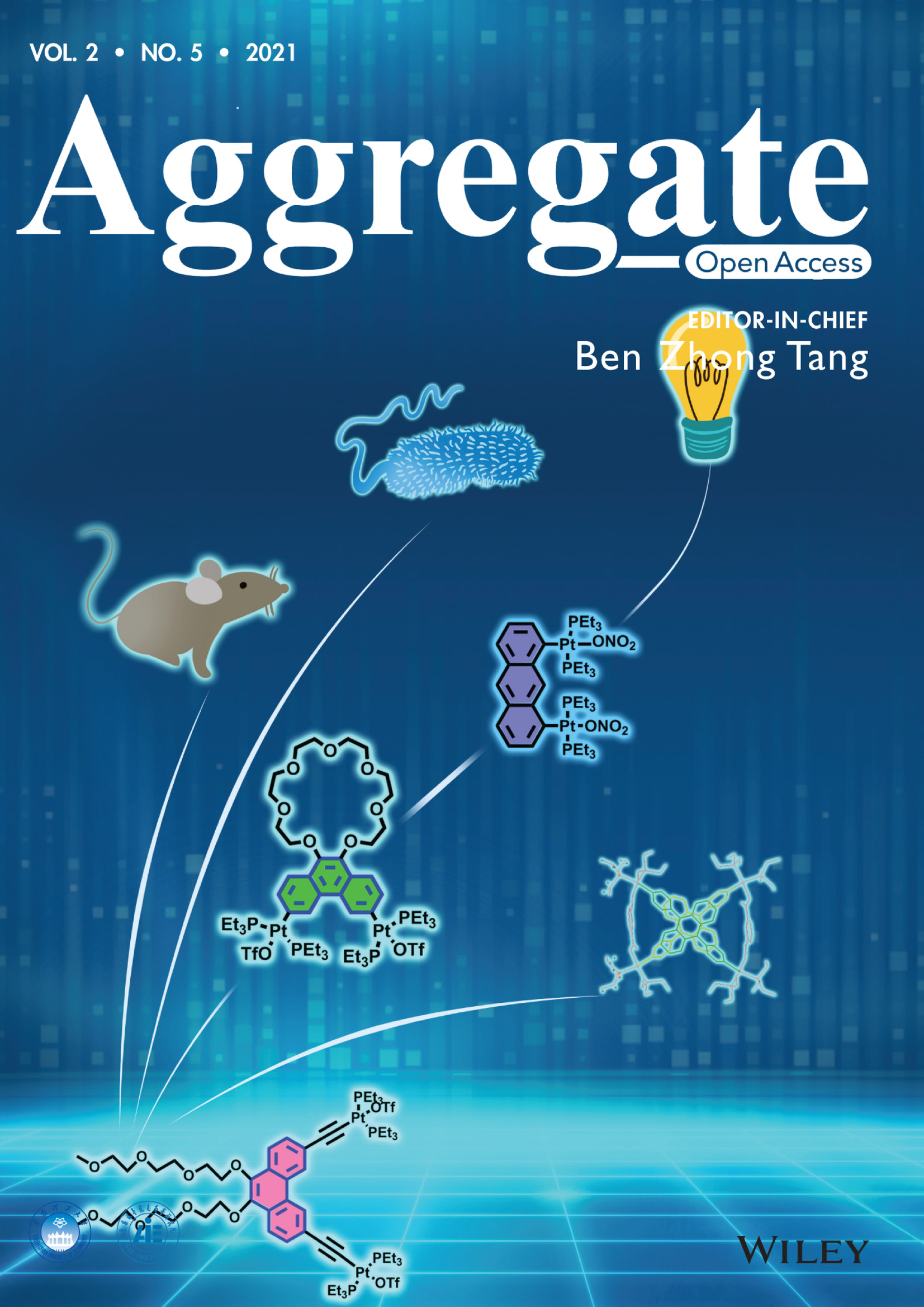
Metal-organic complexes (MOCs), including metallacycles and metallacages, are discrete and well-defined molecular entities using platinum, palladium, iron, zinc, and silver as the metal centers. To date, multiple two-dimensional polygons and three-dimensional polyhedra have been prepared and were used for biochemical and biomedical applications. In this review, we summarized the latest progress in this area in approximately the last five years. (Aggregate. 2021;2:e94)
INSIDE BACK COVER
Inside Back Cover: Rational design for thermochromic luminescence in amorphous polystyrene films with bis-o-carborane-substituted enhanced conjugated molecule having aggregation-induced luminochromism
- First Published: 22 October 2021
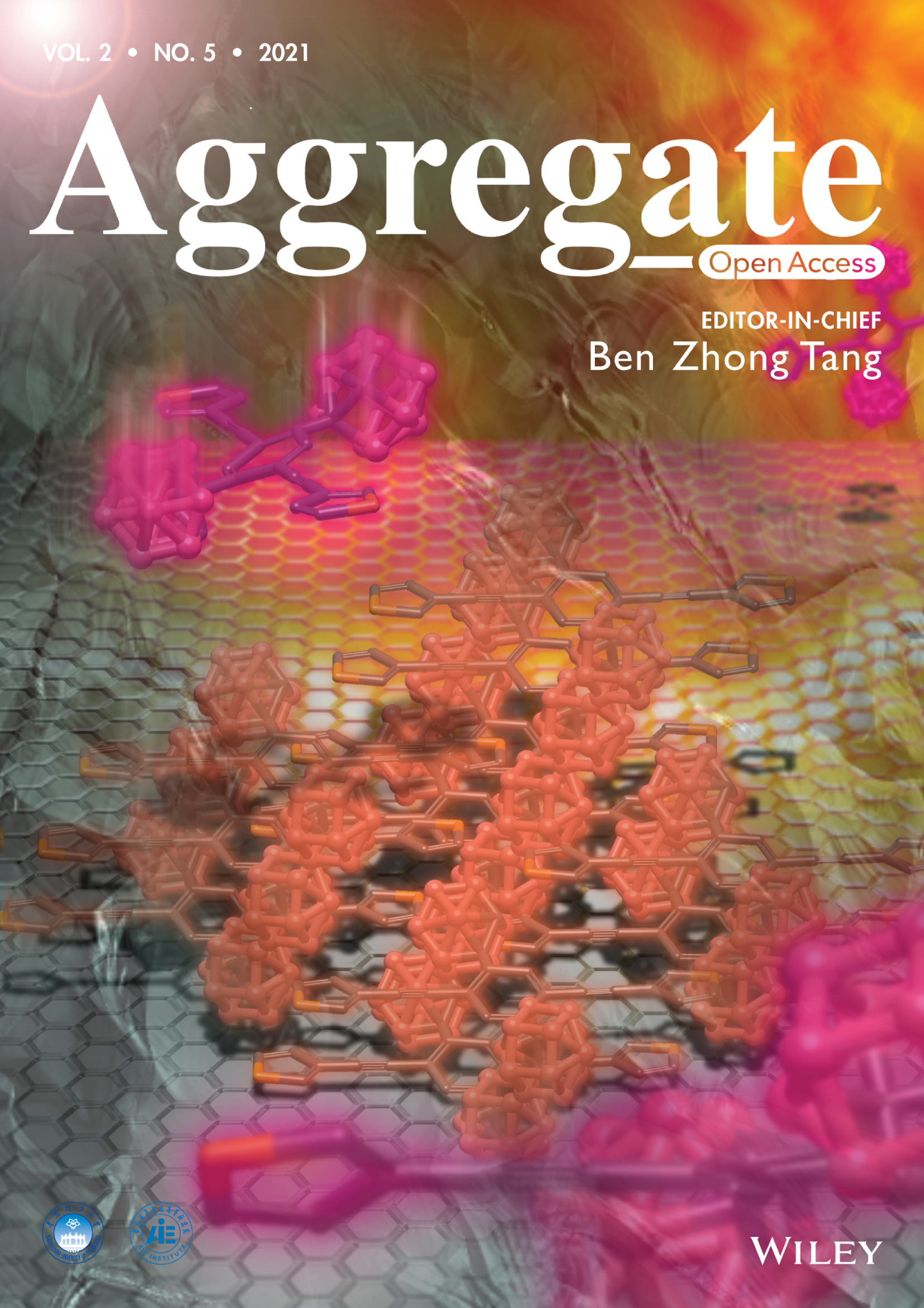
We designed and synthesized bis-o-carborane-modified luminophores for obtaining stimuli-responsive luminochromism in the solid state. The compounds show intense emission in condensed and crystalline states by suppressing aggregation-caused quenching. Especially, we fabricated dye-loaded polystyrene films and successfully observed thermochromic luminescence. Our materials are expected to be a versatile scaffold for developing film-type sensors. (Aggregate. 2021;2:e93)
BACK COVER
Back Cover: Luminescent nano-bioprobes based on NIR dye/lanthanide nanoparticle composites
- First Published: 22 October 2021
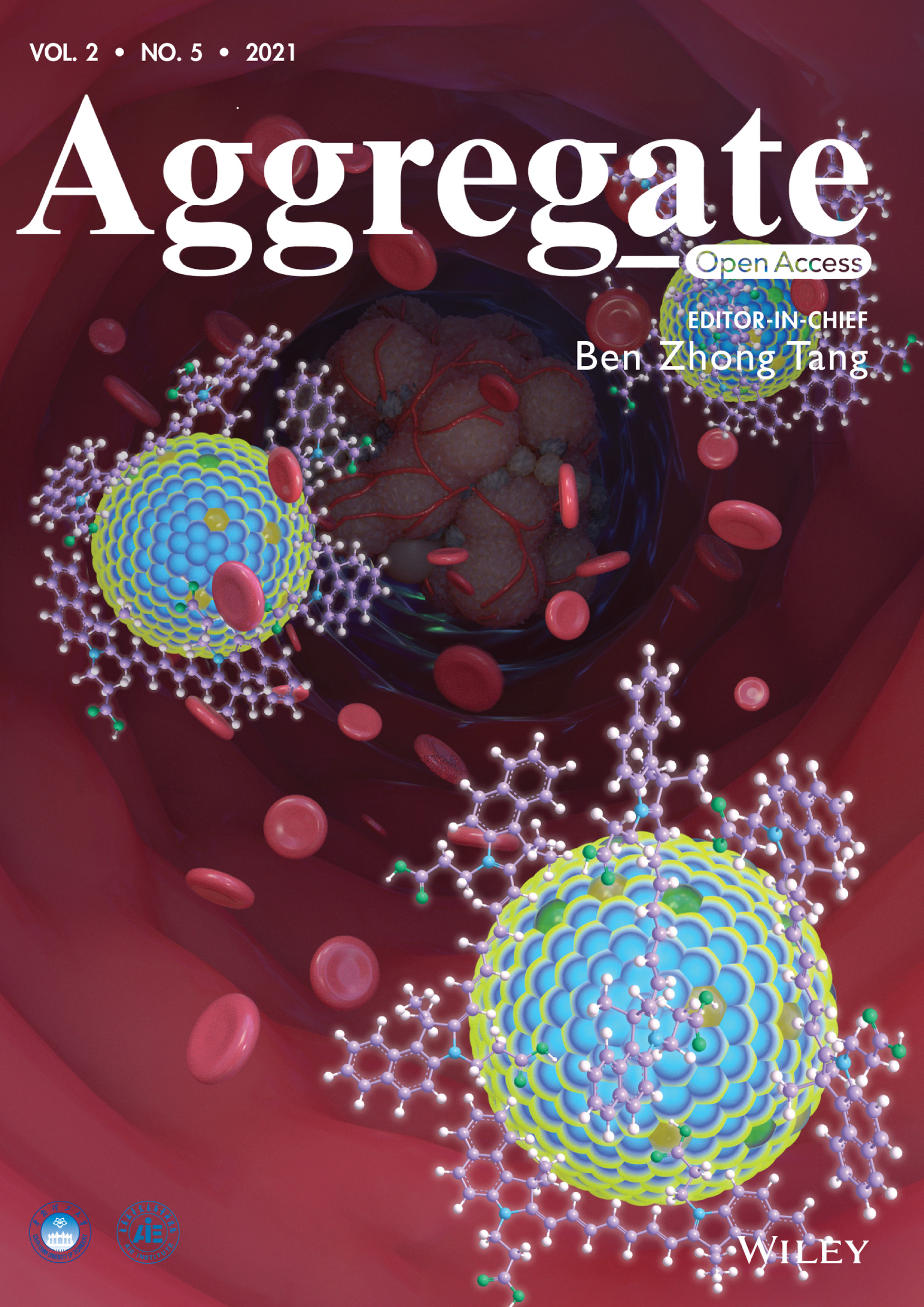
NIR dye / lanthanide nanoparticle (LnNP) composites have been rapidly developed in recent years and present a great prospect as versatile nano-bioprobes. This review focuses on the energy transfer mechanisms and the interface engineering in NIR dye/LnNP nanoprobes as well as their applications on luminescent bioimaging, biodetection and multi-modal theranostics. (Aggregate. 2021;2:e59)
FRONTISPIECE
Frontispiece: Circularly polarized luminescence of agglomerate emitters
- First Published: 22 October 2021
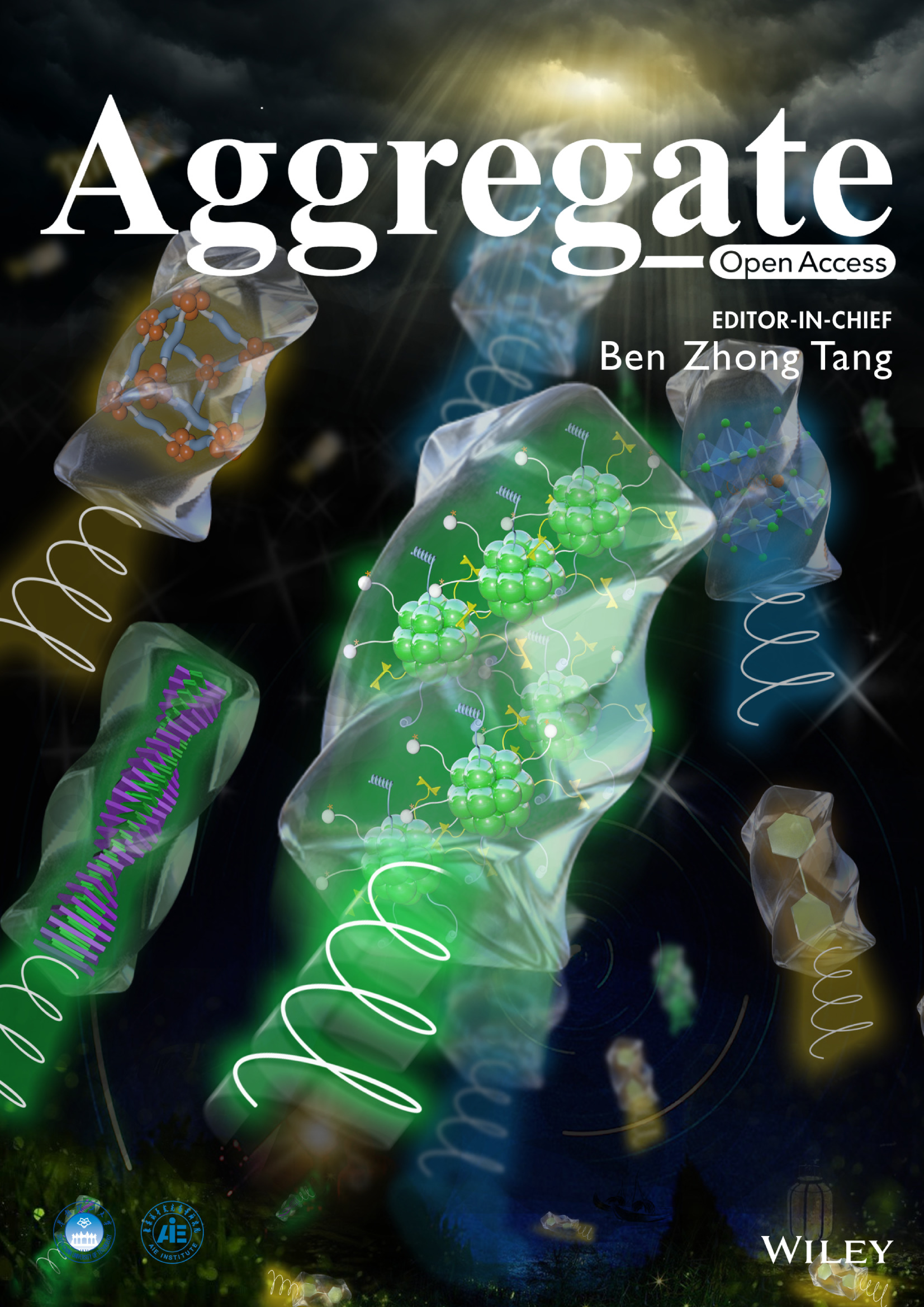
CPL-active agglomerate materials with unique polarization have promising applications in 3D optical displays, encryptions, biological probes, chiral photoelectric devices, and CPL switches. This review systematically summarizes advances in CPL of aggregate and solid materials, and will give inspiration for the design and application of CPL-exhibiting agglomerate materials. (Aggregate. 2021;2:e48)
ISSUE INFORMATION
REVIEWS
Metallacycles, metallacages, and their aggregate/optical behavior
- First Published: 24 June 2021
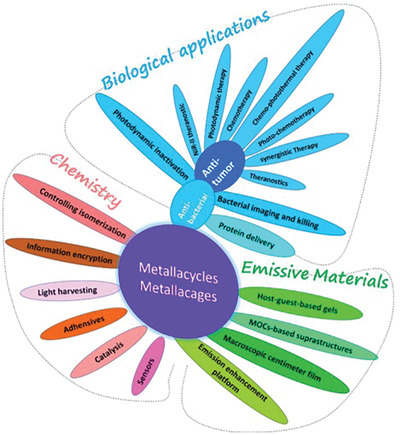
The photophysical properties, specifically the aggregation-related emissions of multiple self-assembled metallacycles and metallacages are reviewed and discussed. In particular, these emissive coordination based self-asembled supramolecular systems can be used in biochemical, sensing, light harvesting applications, and so on.
Circularly polarized luminescence of agglomerate emitters
- First Published: 03 May 2021
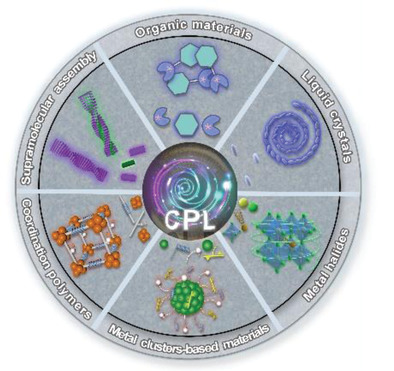
In this review, besides the fundamental principles of circularly polarized luminescence (CPL), CPL measurement methods for solid-state samples and the recent progress of the diverse agglomerate CPL-emitters, including organic materials, crystalline metal-organic materials (coordination polymers, organic–inorganic metal halides, metal clusters, and cluster-assembled materials), supramolecular ensembles, and liquid crystals are summarized. The opportunities and challenges of CPL-emitters in agglomerate state are presented.
Polymeric materials reinforced by noncovalent aggregates of polymer chains
- First Published: 01 September 2021

Recent advances on reinforcement of polymeric materials, including plastics, elastomers, and hydrogels, by the noncovalent aggregates are highlighted. The noncovalent aggregates acting as crosslinking domains and in situ formed nanofillers are effective to strengthen, stiffen, and/or toughen the polymeric materials. Regulation of the noncovalent aggregates offers an effective avenue for the development of polymeric materials with extraordinary mechanical performances and functionalities.
Control of aggregated structure of photovoltaic polymers for high-efficiency solar cells
- First Published: 05 May 2021
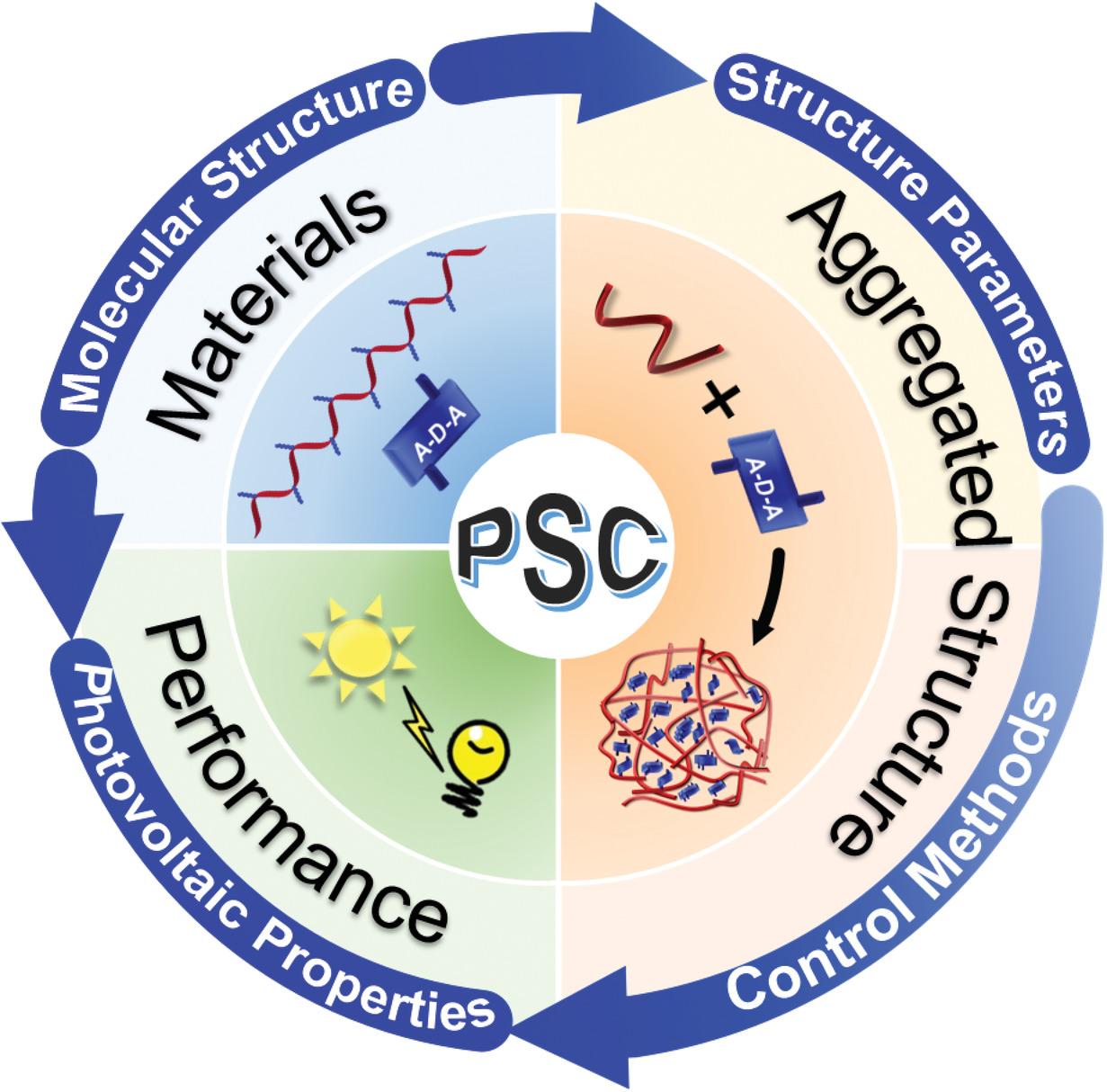
A comprehensive overview of the key advances and current status in aggregated structure research of photovoltaic polymers was presented. This review provided a tutorial on the multi-level aggregated structure and the characteristic parameters as well as the associated characterization techniques. To in-depth understand the structure-performance relationships, effective strategies to control the aggregated structure of photovoltaic polymers are summarized, with an emphasis on the systems of record-high power conversion efficiencies.
Out-of-equilibrium supramolecular self-assembling systems driven by chemical fuel
- First Published: 24 August 2021
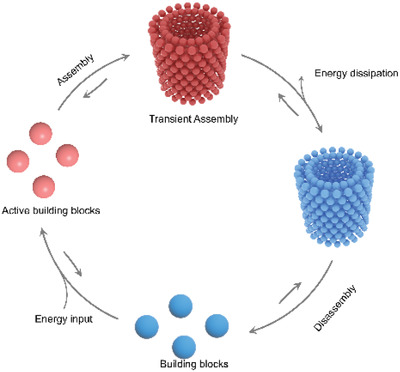
The creation of out-of-equilibrium systems driven by chemical fuel is becoming more common. In this review, we have summarized the recent progress of artificial out-of-equilibrium systems and categorized them with regards to the chemical fuel type. In addition, their design strategies, advantageous features, as well as remaining challenges are also discussed.
Luminescent nano-bioprobes based on NIR dye/lanthanide nanoparticle composites
- First Published: 10 May 2021
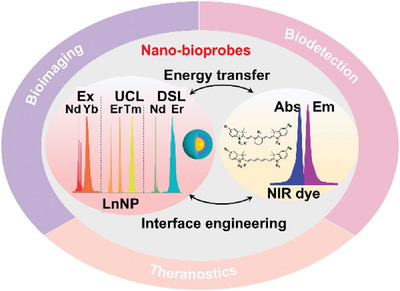
NIR dye/lanthanide nanoparticle (LnNP) composites have been rapidly developed in recent years and present a great prospect as versatile nano-bioprobes. In this review, we focus on the energy transfer mechanisms and the interface engineering in NIR dye/LnNP nanoprobes as well as their applications on luminescent bioimaging, biodetection, and multimodal theranostics.
Chiral transfer-dictated self-assembly of chiral block copolymers
- First Published: 16 September 2021
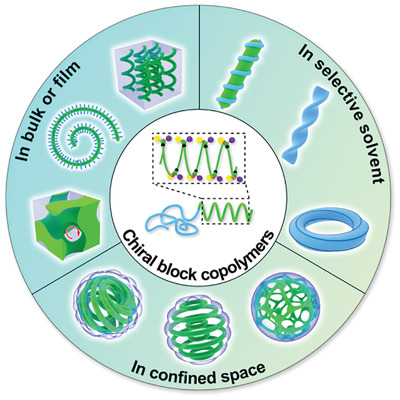
The self-assembly of chiral block copolymers (BCPs*) represents a facile access to controllable chiral structures. In this review, we presented the self-assembly of BCPs* in bulk/films, selective solvents, and confined spaces. The chiral transfer process in these assembly scenarios were discussed and highlighted as a key contributor to the morphological chirality.
Molecular mechanism of aggregation-induced emission
- First Published: 03 June 2021
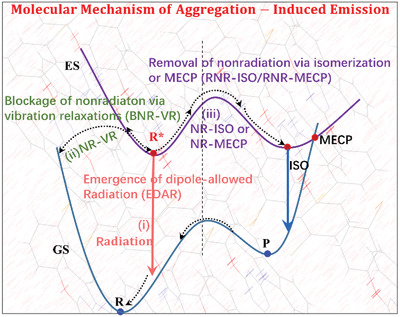
This review provides a comprehensive and profound theoretical picture of the inherent luminescence mechanism of AIE in a variety of AIEgens, which will be helpful to deeply understanding the universality of AIE phenomenon and further extending the scope of AIE systems and exploiting new applications.
RESEARCH ARTICLES
Rational design for thermochromic luminescence in amorphous polystyrene films with bis-o-carborane-substituted enhanced conjugated molecule having aggregation-induced luminochromism
- First Published: 24 June 2021

To realize aggregation-induced luminochromism in polystyrene, we designed bis-o-carborane-substituted conjugated triad. By loading the electron-rich unit, thiophene, onto the aggregation-induced emission-active skeleton, luminochromic behaviors by heating, followed by thermochromic luminescence, were obtained.
Solid-state emissive biphenylene bridged bisaroyl-S,N-ketene acetals as distinct aggregation-induced enhanced emitters and fluorometric probes
- First Published: 01 September 2021

The Power of Pairs: Biphenylene bridged bisaroyl-S,N-ketene acetals are AIEEgens that can be applied as naked-eye multi-color water sensors in liquors. A substance library of 20 bisaroyl-S,N-ketene acetals using a Masuda borylation Suzuki arylation one-pot sequence is presented with distinct investigations of their aggregation-induced emission and rainbow tunable solid-state emission behavior.




